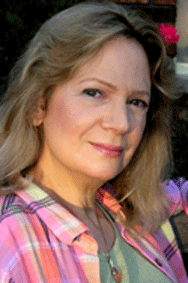Have you been thinking about China lately? After all, February 8th marks the Chinese New Year – the Year of the Monkey (specifically, the Red Fire Monkey). China’s economy (second only to that of the U.S.) has the world rocking and rolling but not in a good way. Territorial disputes in the South China Sea threaten conflict with several nations with whom the U.S. is closely tied, including Brunei, Taiwan, the Philippines, Malaysia and Vietnam. Lots of reasons to have China on one’s mind.
What has me thinking about China is a story that hasn’t gotten much play in the U.S. media but should resonate with anyone in the book industry: the mysterious disappearance of five Hong Kong book publishers since last October – publishers who had profitably produced and sold books on topics banned by Beijing: political corruption, religion and the intimate lives of Communist Party officials.
Chinese authorities confirmed that at least two of the missing publishers were being detained in mainland China. All of the disappearances are considered abductions, carried out to silence critics, part of a pattern against human rights lawyers, activists and bloggers. Before leaving Hong Kong to join family in the U.S., publisher Jin Zhong warned, “You don’t want to risk your life just to get a book published.”
Does this chilling series of human rights violations signal the demise of the banned book industry in Hong Kong? What does that mean for a Hong Kong fighting to maintain its personal freedoms? What might that mean for publishing in and outside of China?
Just last May, BookExpo America (BEA), North America’s largest annual book trade fair, welcomed China at its Global Market Forum. The China delegation was the largest international delegation that ever attended BEA, with more than 170 publishing companies represented and a 25,000-square-foot “Guest of Honor” display. According to a Publishers Weekly report, “The country’s publishers, who have imported an increasing number of U.S. titles, are hoping to build a market for some of their top authors overseas.”
Self-published authors requiring advanced (more expensive) production capabilities for their books have been increasingly turning to Chinese printing and publishing companies in order to produce books that would otherwise not be profitable.
Like so many other aspects of modern commerce, there is a symbiotic relationship between authors in the free world and publishing companies in government-controlled China. I suggest that much as we need them, they need us more, especially as their economy tries to calm its choppy seas. I hope authors and publishers who treasure their freedom of expression will join together and make sure China hears our voices speaking for those whose voices are being silenced.
For more about banned books, see my Book●ed Blog posts from 2013: “451 Degrees- Part 1” and “Part-2”. If you think banned books can’t happen here, check my “Recommended” post from March 31, 2013.

